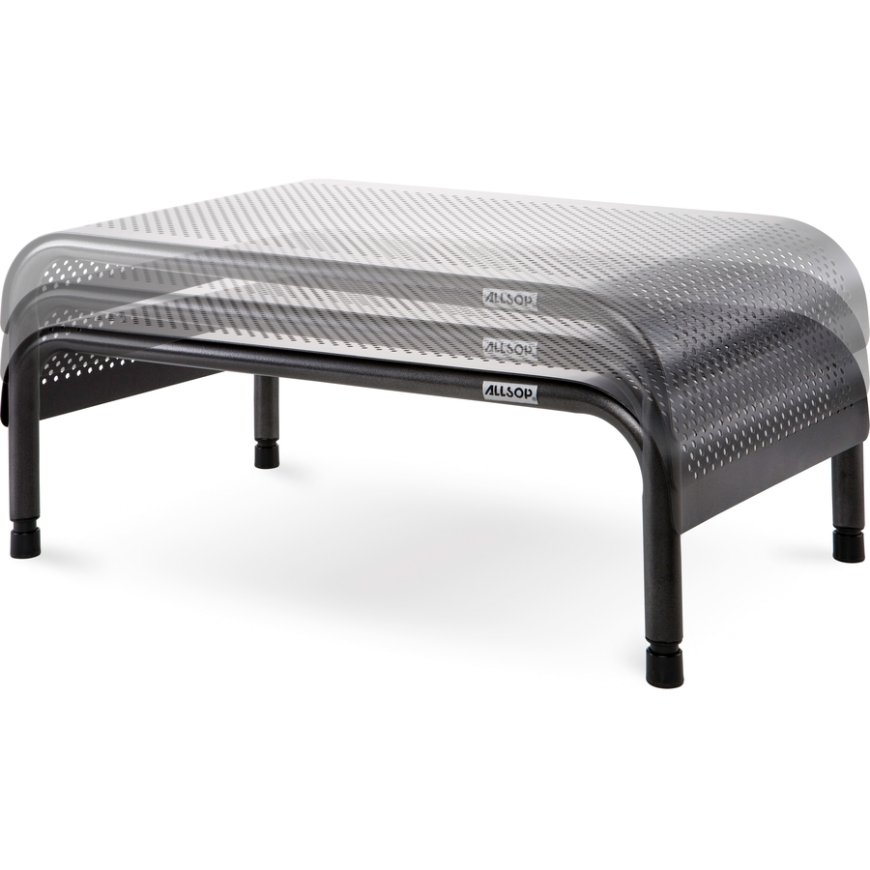Allsteel's Journey: From Metal Enclosures to Modern Office Solutions
In the world of workplace furniture, few names carry the legacy, innovation, and evolution that Allsteel does. From its humble beginnings as a metal shop crafting lockers and enclosures to becoming a leader in human-centered, future-forward office solutions.

In the world of workplace furniture, few names carry the legacy, innovation, and evolution that Allsteel does. From its humble beginnings as a metal shop crafting lockers and enclosures to becoming a leader in human-centered, future-forward office solutions, Allsteel's journey reflects the broader transformation of how we think about work and the environments that support it.
This is a story of reinvention, design leadership, and an unwavering commitment to shaping the modern workplace.
Humble Beginnings: Metal Craftsmanship Roots
Founded in 1912, Allsteel began as Allsteelequip Company, a small firm based in Aurora, Illinois. The company's initial focus was on metal enclosures, lockers, and file cabinets, serving industrial and commercial clients with practical, durable products that reflected the era’s values of strength, utility, and permanence.
In the mid-20th century, as offices became more formalized and structured, there was a growing need for standardized storage and filing systems. Allsteel quickly made a name for itself by producing robust, high-quality metal filing cabinets—reliably serving the administrative backbone of the American office.
Entering the Office Furniture Market
By the 1960s, the office environment was undergoing significant changes. Businesses were expanding, technology was emerging, and the idea of efficiency through space planning was taking hold. Allsteel recognized that it could do more than manufacture cabinets—it could help shape how work happens.
This led to the company's expansion into office furniture systems, including desks, workstations, and modular furniture. Allsteel’s entrance into this market was timely, coinciding with the post-war boom in white-collar employment and a growing awareness of workspace design’s impact on productivity.
A Culture of Innovation
Allsteel's growth wasn’t just about following trends—it was about setting them. Through the decades, the company built a culture of innovation centered around:
-
Engineering excellence: Leveraging its metalworking expertise to build structurally sound furniture
-
User-centric design: Prioritizing comfort, ergonomics, and flexibility
-
Sustainability: Committing to environmentally responsible materials and processes
-
Modularity: Designing furniture systems that evolve with changing workplace needs
One of the pivotal developments in Allsteel's history was the creation of modular furniture systems that allowed for greater flexibility and efficiency in space planning. This was especially relevant during the rise of open office plans in the 1980s and 1990s.
Merging Function with Form
As design standards in commercial spaces elevated through the 1990s and 2000s, Allsteel continued to evolve—collaborating with renowned industrial designers, embracing contemporary aesthetics, and pushing the boundaries of what office furniture could be.
The company’s partnership with design studios and architects helped elevate the brand from purely functional to functionally beautiful. Products such as the Stride® workstations, Inspire® seating, and Align™ tables showcased how form and function could co-exist without compromise.
This period also saw a shift from furniture as static fixtures to furniture as active facilitators of collaboration, focus, and innovation.
Adapting to the Agile Workplace
The 2010s marked a seismic shift in workplace culture. With the rise of remote work, digital tools, and a millennial workforce demanding flexibility, the idea of a fixed office began to erode.
Allsteel responded with agility, launching solutions that support agile work environments, activity-based working, and choice-driven work modes. The company’s product portfolio expanded to include:
-
Height-adjustable workstations
-
Collaborative seating and lounge systems
-
Acoustical privacy solutions
-
Mobile and reconfigurable meeting tables
-
Hybrid meeting technology integration
Furniture like the Peak Collection and Structure Tables exemplify Allsteel’s commitment to serving modern teams that work differently, seamlessly blending modular design with technology and human needs.
Human-Centered Design Philosophy
At the heart of Allsteel’s evolution is a deep belief in human-centered design. This means:
-
Designing with the end-user in mind—comfort, posture, and interaction
-
Recognizing the diversity of workstyles, neurodiversity, and accessibility
-
Creating inclusive environments that foster well-being, creativity, and belonging
By collaborating with researchers, workplace strategists, and ergonomics experts, Allsteel designs products that support physical and mental wellness in the workplace.
This approach is especially evident in products like:
-
Relate® Seating: Built for movement and adaptability
-
Mural® Systems: Combining lounge, privacy, and collaboration zones in one
-
Gather™ Collection: Furniture designed to enhance informal and spontaneous collaboration
Sustainability as a Core Value
As the global climate crisis grows more urgent, Allsteel has reinforced its commitment to sustainable practices at every level. This includes:
-
Using recycled and recyclable materials
-
Minimizing VOC emissions
-
Achieving Indoor Advantage Gold certification for air quality
-
Reducing energy and water consumption in manufacturing
-
Supporting furniture reuse and donation through partnerships like Green Standards
Allsteel’s products contribute to LEED certification and align with programs such as WELL Building Standard, reflecting the company’s mission to create not just better offices—but a better world.
Empowering the Hybrid Future
Today, the world of work is more complex and fluid than ever. Hybrid work models, digital collaboration, and flexible real estate strategies require furniture that can adapt in real time.
Allsteel is meeting these needs head-on with innovations that support:
-
Plug-and-play technology integration
-
Reconfigurable layouts
-
Privacy on demand
-
Hybrid meeting facilitation
-
Distributed work styles
Its continued focus on research-driven design, paired with a heritage of craftsmanship, positions Allsteel as a trusted partner in building the workplaces of tomorrow.
The Allsteel Difference
So what sets Allsteel apart in a crowded marketplace?
-
Legacy of Craftsmanship
Over 110 years of engineering expertise and material integrity. -
Design Leadership
Award-winning products created with top industrial designers and architects. -
User-Focused Innovation
Solutions that respond to how real people actually work. -
End-to-End Support
From space planning to post-occupancy support, Allsteel is a true collaborator. -
Purpose-Driven Sustainability
Every decision guided by environmental and social responsibility.
Looking Ahead
As Allsteel continues its journey, it does so with a clear mission: to enable organizations and their people to thrive through meaningful design. The office is no longer just a place—it’s a platform for culture, creativity, and connection. And Allsteel is building that platform, one thoughtful product at a time.
From metal enclosures to modern office ecosystems, Allsteel’s story is one of transformation—but also one of consistency in values: durability, innovation, and a commitment to the people who use their products every day.
























































































































































